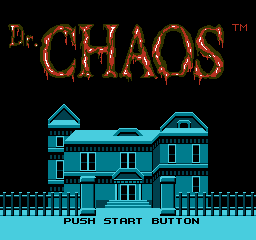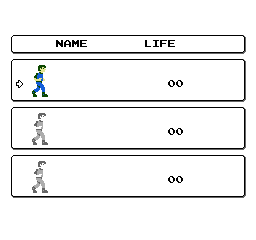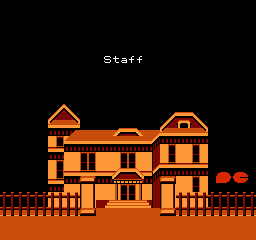Dr. Chaos
| Dr. Chaos |
|---|
|
Also known as: Dr. Chaos: Jigoku no Tobira (JP)
|
Dr. Chaos is a game about a guy saving his brother, the titular Dr. Chaos. Bet you didn't expect that!
Contents
Regional Differences
Dr. Chaos was released in Japan for the Famicom Disk System peripheral, under the name Dr. Chaos: Jigoku no Tobira (The Door of Hell). Several gameplay mechanics, visuals, and audio were heavily modified for the US release.
Copyright Screen
The Japanese version lacks this screen and goes directly to the title screen, which was added for the US version.
Continuing the Game
| Japan | US |
|---|---|
In Japan, there is a file select feature which was removed from the US version. In the US version, there is a password feature replacing the file select feature.
In the Japanese version, you must press Select + B + A button to save the game during the pause, so as to keep the HP and life points of the bottle, which can only be saved in the mansion area, and this operation will also return to the title screen.
In the US version, when the game is paused, you can press A button or B button anywhere (except to explore the room) to view the password and allow the game to continue.
Game Over
| Japan | US |
|---|---|
 |
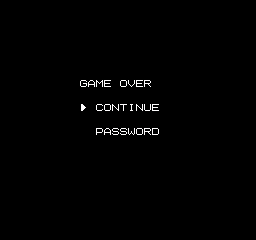 |
The FDS version font uses the Atari font, which is similar to Stinger (NES), Rush'n Attack (NES) , Section Z (NES) and Castlevania III: Dracula's Curse.
Game Play
Player
Michael's move speed was increased in the US version making it easier when jumping over holes and etc.
He also moves smoother in the Japanese version.
In the US version, when a large beast appears in the exploration room and the speed is slowed down, walking to the left is faster than walking to the right. This maybe a programming error.
Enemies
In the US version, the Smorks appear in the Warp Zones, while in the Japanese version, they appear in the Mansion.
In the US version, some enemies were removed from some Warp Zones.
In the US version, the appearance of some enemies will cause the screen to flicker for a while.
When hitting an enemy in the Japanese version, the enemy will not temporarily stop moving, in the US version it will temporarily stop moving.
First Person View
You are able to look behind you in the US version by moving your hand to the roof of the room.
Warp Zones
The warp zones have been made longer and less compact in the US version.
Miscellaneous
Pausing and Resuming
Whenever you resume the game, the Japanese version of the music starts over or goes back to the loop part. In the US version, when you resume, the music continues where it was.
Scene Scrolling
The US version pauses for a while when the reel finishes scrolling, to avoid the music being covered by the sound effects.
Password Appear
In the US version, every time a laser gun part is collected, the password will appear automatically.
Music
While both the NES and FDS versions share the same music, they feature completely different arrangements of each song. The NES version also adds drum tracks to the music while the FDS original doesn't feature much percussion. Also, the FDS version does not take advantage of the RP2C33 expansion audio that is offered by the Disk System.
Furthermore, the FDS version uses many dull square waves, whereas the NES version uses custom instruments with vibrato.
The Japanese version stutters slightly at the beginning of the loop for some reason.
Title Screen
| Japan | US |
|---|---|
Mansion
| Japan | US |
|---|---|
Exploring rooms
| Japan | US |
|---|---|
Warp Zones
| Japan | US |
|---|---|
Boss Battle
| Japan | US |
|---|---|
The prelude to the boss battle music in the Japanese version is quite simple, and the tempo is not as varied as the US version.
In Japanese version, a certain pulse channel in the prelude is occupied by sound effects.
Ending
| Japan | US |
|---|---|
Staff Roll
| Japan | US |
|---|---|
At the end of the Japanese version ending, the triangle channel is slightly out of tune. The US version sped up the tempo, and for some reason the triangle channel was out of sync.
Sound Effect
Select File
| Japan | US |
|---|---|
The Japanese version sounds slower than the US version.
Deciding File
This sound effect only exists in the Japanese version.
Scene Scrolling
| Japan | US |
|---|---|
The US version has accelerated Tempo to match the scroll movement speed.
Go to Warp Zone
In the Japanese version, when entering the Warp Zone, there will be a sound effect when entering the loading screen. The US version does not have this sound effect because there is no loading time.
Ending
| Japan | US |
|---|---|
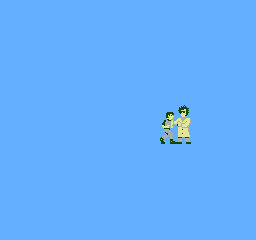 |
 |
The FDS version lacks any tiles, which were added for the NES version.
Staff Roll
| Japan | US |
|---|---|
- The FDS version uses all caps, whereas the NES version uses both upper-case and lower-case lettering.
- Furthermore, the text font has been changed.
- In the Japanese version, the Pony Canyon logo is over the middle of the mansion. In the NES version, it is placed on the lower-right corner of the screen.
- Takachan Iwamoto (Taku Iwamoto) was removed from the assistance role in the USA release, as well as Ruchan Takayasu.
- PRESENTED BY PONY INCORPORATION was changed to Presented by Pony Canyon inc.
- The © 1987 PONY INC. copyright was changed to ©1988 FCI/PONY CANYON in the USA release.
- Pages missing developer references
- Games developed by Marionette
- Pages missing publisher references
- Games published by FCI
- Games published by Pony Canyon
- NES games
- Famicom Disk System games
- Pages missing date references
- Games released in 1987
- Games released in June
- Games released on June 19
- Games with regional differences
Cleanup > Pages missing date references
Cleanup > Pages missing developer references
Cleanup > Pages missing publisher references
Games > Games by content > Games with regional differences
Games > Games by developer > Games developed by Marionette
Games > Games by platform
Games > Games by platform
Games > Games by publisher > Games published by Fuji Television > Games published by FCI
Games > Games by publisher > Games published by Fuji Television > Games published by Pony Canyon
Games > Games by release date > Games released in 1987
Games > Games by release date > Games released in June
Games > Games by release date > Games released in June > Games released on June 19
The Cutting Room Floor > Unimportant Awards > NES games
The Cutting Room Floor > Unimportant Awards > NES games > Famicom Disk System games
